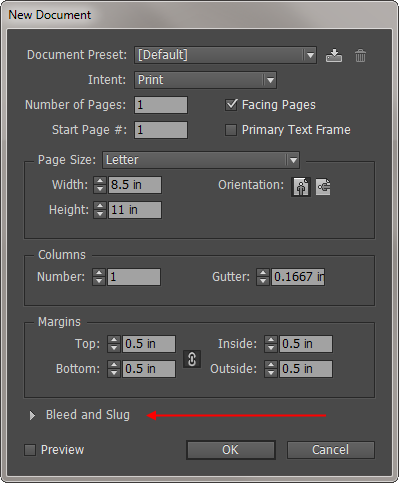
We use this information to address the inquiry and respond to the question. To conduct business and deliver products and services, Pearson collects and uses personal information in several ways in connection with this site, including: Questions and Inquiriesįor inquiries and questions, we collect the inquiry or question, together with name, contact details (email address, phone number and mailing address) and any other additional information voluntarily submitted to us through a Contact Us form or an email. Please note that other Pearson websites and online products and services have their own separate privacy policies. This privacy notice provides an overview of our commitment to privacy and describes how we collect, protect, use and share personal information collected through this site.

If you are placing the Miami logo on a colored background, it should have a white outline and be filled with red or white.
Slug indesign pdf#
From the "Adobe PDF Preset" field, choose "High Quality Print” or "PDF/X-1a:2001.".From the "Format" field, select "Adobe PDF (Print)." Once the file is saved, the "Export Adobe PDF" dialog box will appear.From the File menu, choose "Export." The "Export" dialog box will appear.To set crops marks and bleeds within InDesign, do the following: Failure to do so could result in formatting changes between computers when sending a file from a native application like InDesign or Word. Once your document has been finished and proofed, saving as a PDF will lock in your formatting, fonts, and picture resolution. Create a high resolution PDF with crop marks and bleeds.Note: Remember that when laying out your document, the image or box of color must extend past the edge of the page in order to truly bleed out to the red margin outside the edge of the paper (the thicker black line). Click OK. Your page will appear with a red guideline just outside the edge of the page in your document window.Expand the "Bleed and Slug" section to set bleed measurement.From the File menu, choose "Document Setup." The "Document Setup" dialog box will appear.To bleed an image or color off the edges of the page within InDesign, do the following: When a document has bleed, it must be printed on a larger sheet of paper and then trimmed down. Bleed is a printing term that is used to describe a document that contains images or elements that touch the edge of the page, extending beyond the trim edge and leaving no white margin. However, some limitations or issues might arise when printing your final piece.

You can create documents using Microsoft products such as Word, Publisher, PowerPoint, etc. We recommend Adobe InDesign for all page layout work. Create your publication using a page layout program.When preparing your file(s) for printing, you'll want to follow a few best practices, which are outlined below:


 0 kommentar(er)
0 kommentar(er)
